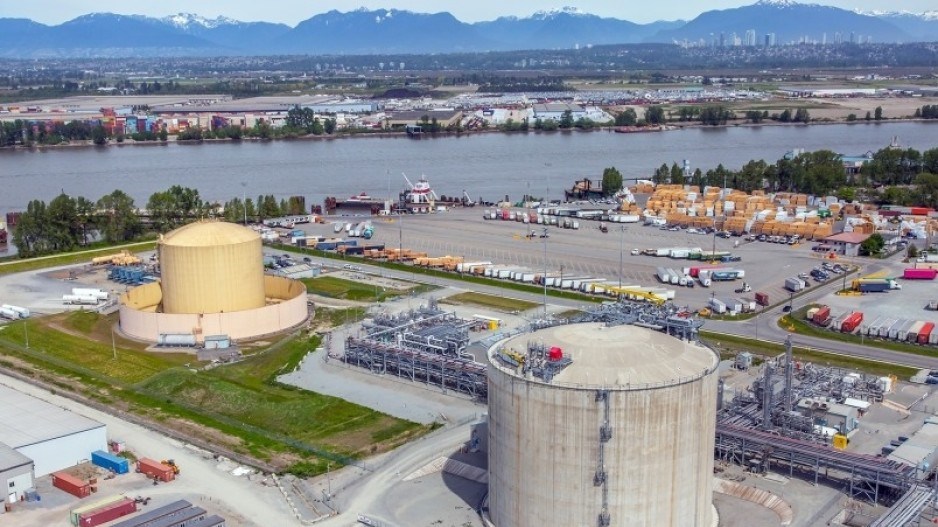FortisBC is applying to Metro Vancouver to increase its maximum permitted sulphur dioxide emissions eight-fold – from 3.4 tonnes per year to 28 tonnes per year – at its Tilbury liquefied natural gas (LNG) plant across the Fraser River from Richmond.
But FortisBC said 28 tonnes is the maximum emissions possible and they don’t expect them to ever reach that amount, something Metro Vancouver’s Kathy Preston, program manager of air quality regulation, confirmed.
In fact, Preston said, FortisBC had a temporary permit to emit 160 tonnes per year but they never got anywhere near that amount and have since changed the technology they use.
FortisBC spokesperson Trevor Wales pointed out the amount of emissions in the application, 28 tonnes per year, is the theoretical amount, but the facility would operate in a way that this amount would never be reached.
A 46,000 cubic metre storage tank was part of the first expansion phase at the Delta plant, located across the south arm of the Fraser River from Richmond. FortisBC has applied for further expansion, something Richmond city council is opposed to.
Preston pointed out the process to get a permit amendment is an arduous one with lengthy emissions reports that are carefully critiqued by Metro Vancouver air quality staff.
To increase its sulphur emissions, FortisBC has to compile a rigorous report that estimates how much will be released and where it will be dispersed – this report is then sent to Fraser Health, the health authority where the plant is located, to assess its health impacts.
The report includes information like the surrounding topography, the sources of the sulphur, temperature, height of stacks and velocity.
The report will also include information about concentrations of sulphur at points on a grid as well as at “receptors,” for example, schools, businesses, residential areas and care homes, and then it will predict maximum emissions at every single point for every hour over the period of the year.
“It’s a very rigorous process and it’s fairly conservative because you’re using the maximum possible emission rate and then you’re pulling out the maximum possible concentration,” Preston said.
The sulphur that’s removed from gas during the liquefaction process is the sulphur that’s put in to warn people of the gas in the event of a leak.
Currently, it’s being taken off-site to be disposed of.
The application to amend the permit also includes small increases to nitrogen oxides, volatile organic compounds and combustion particulate but methane emissions will remain at a maximum of 56 tonnes per year.
Every year, 1,400 tonnes of sulphur is released into the Metro Vancouver airshed, half from industry and half from transportation.
Metro Vancouver is receiving feedback on the project at [email protected].
Whether there is a public information session will depend on how much feedback comes into Metro Vancouver, Preston explained.




